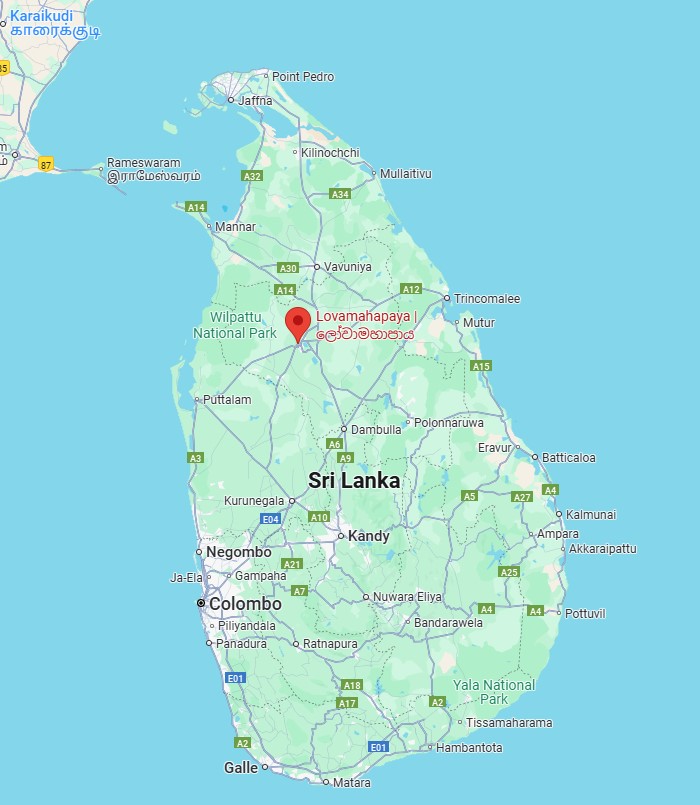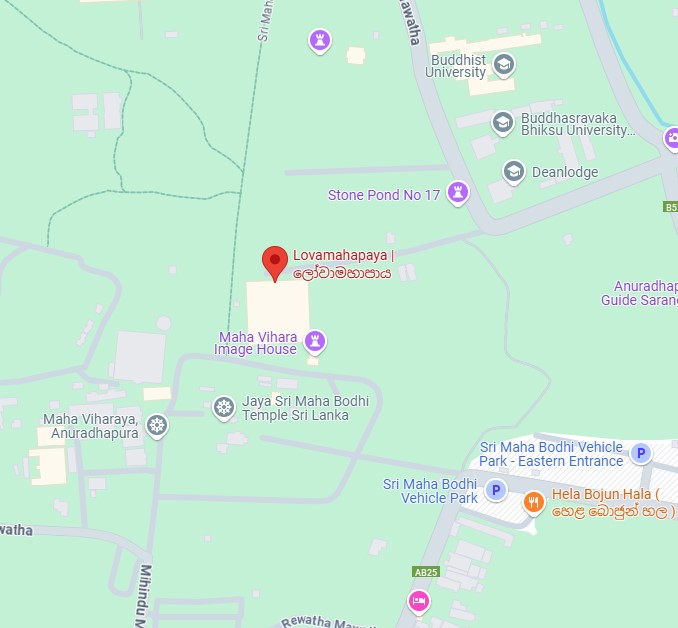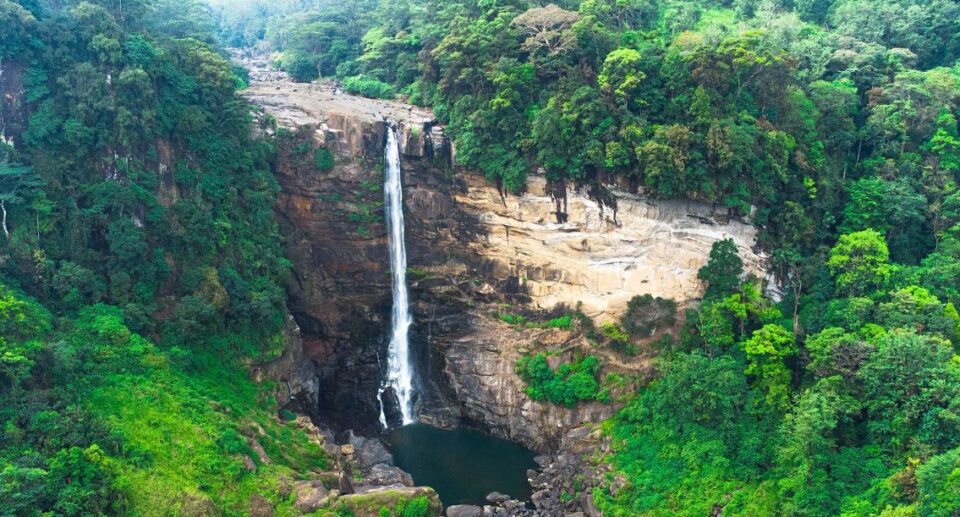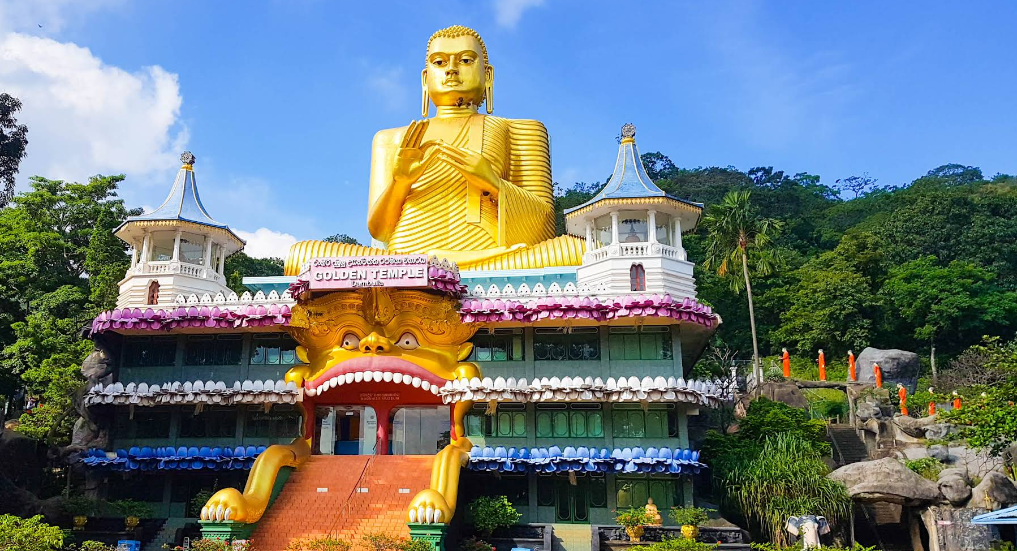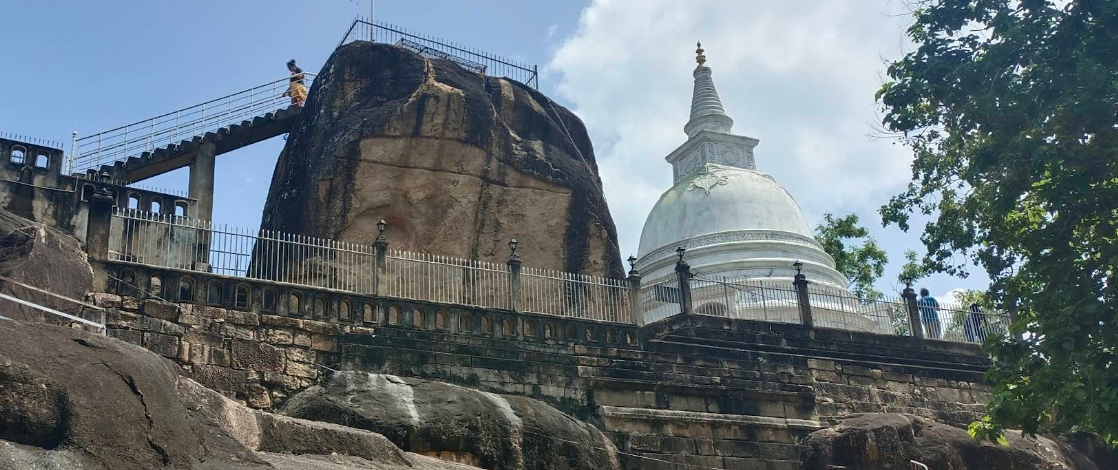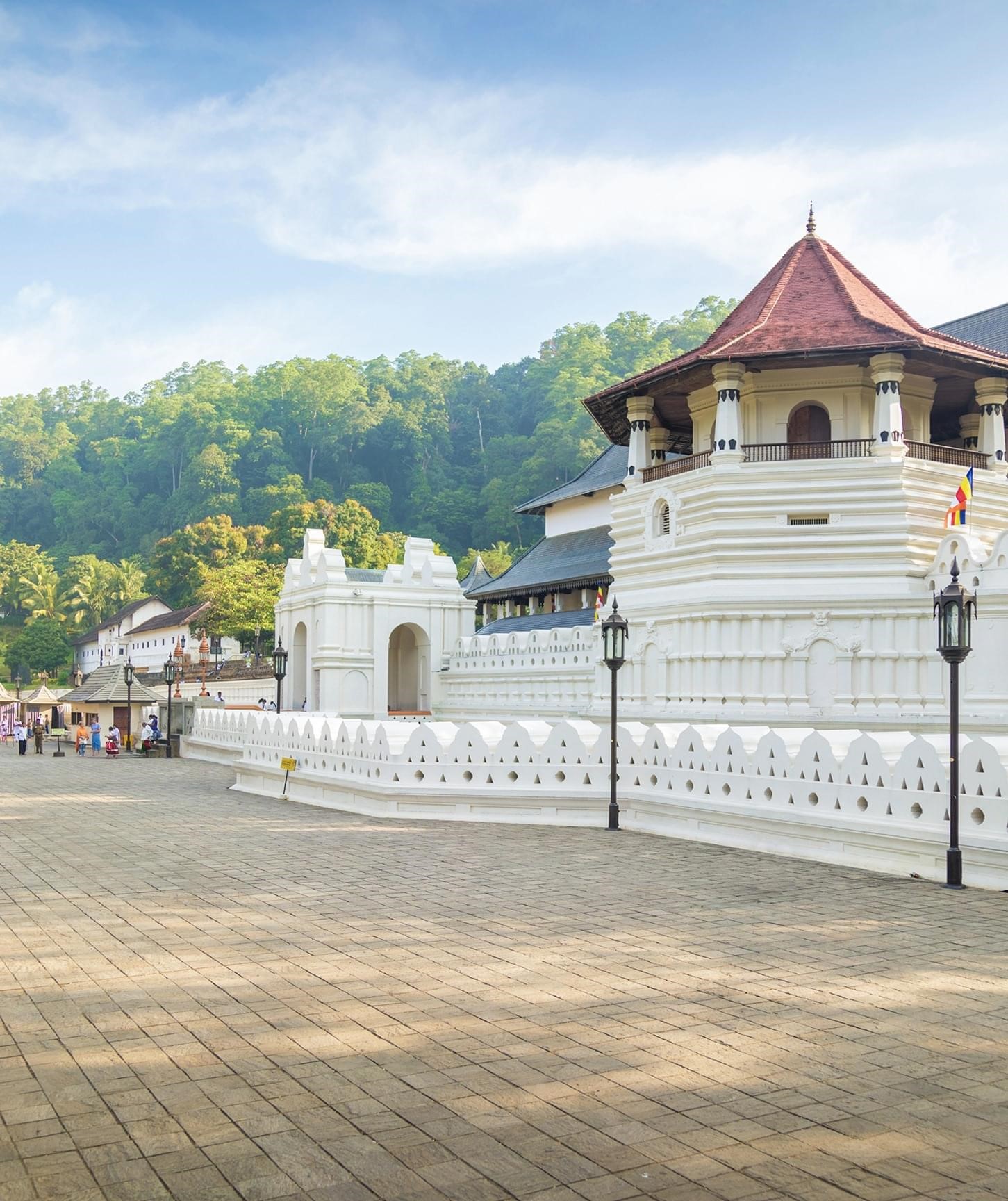Lovamahapaya: An Ancient Marvel of Buddhist Architecture
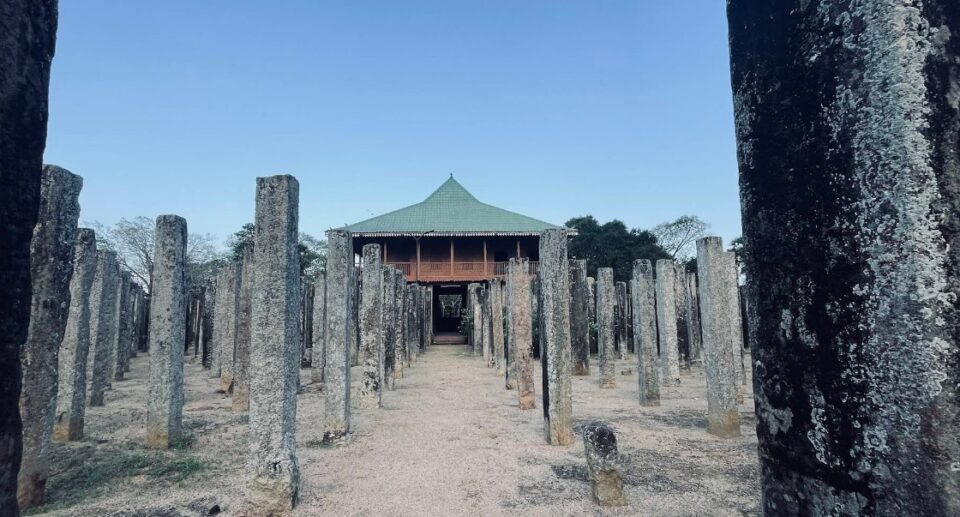
In the heart of the ancient city of Anuradhapura, nestled between two of Sri Lanka’s most sacred landmarks Ruwanwelisaya and Sri Maha Bodhi is the Lovamahapaya, a palace of former religious glory and architectural beauty. Also known as the Brazen Palace, the ancient structure, originally constructed in the 3rd century BCE, is among the most significant ruins of Sri Lanka’s early Buddhist civilization. Though today only the stone pillars remain, Lovamahapaya symbolizes the architectural ambition, religious devotion, and administrative sophistication of the Anuradhapura Kingdom.
Historical Background

Lovamahapaya was built under the reign of King Dutugemunu (161–137 BCE), one of the most celebrated kings in Sri Lankan history. The king, who was legendary for unifying the island and restoring Buddhist institutions, commissioned this structure for the Maha Sangha the Buddhist monastic fraternity. According to ancient annals like the Mahavamsa, it was built under the auspices of Arhant Mahinda, the Buddhist monk who introduced Theravāda Buddhism to Sri Lanka from India.
Lovamahapaya was not conceived as a monastery or residential quarters for monks but as a multi-purpose religious complex, with residential quarters, study halls, and meditation rooms. The structure was so magnificent that it was likened to the heavenly abodes of Buddhist cosmology.
The Name “Brazen Palace”
The name “Lovamahapaya” comes from the Sinhalese words “Lova” (world), “Maha” (great), and “Paya” (palace or building), which literally translates as “The Great Monastery of the World”. It was, however, commonly known as the Brazen Palace, since it was roofed with bronze tiles, which shone like fire in the tropical sun. This made the palace visible for miles around and helped to symbolize the wealth and spiritual wealth of the Anuradhapura era.

Architecture and Design
The original Lovamahapaya was a gigantic structure, with: Nine stories, which rose to a height of around 150 feet (46 meters) tall., 1,600 stone columns in 40 rows, which supported the massive building., 1,000 chambers, which were monk quarters, libraries, and classrooms. A roof made of bronze tiles, hence the name “Brazen Palace.”
It was the tallest building in Sri Lanka at that time and possibly one of the tallest in the ancient world. The building reflected the island’s increased knowledge of engineering and construction, especially in the syncretic use of stone, wood, and metal.

Every level is believed to have been used for its own function: lower levels for sleeping and meditation, middle levels for studying and teaching scripture, and the highest for ceremonial purposes. The accuracy and symmetry of its column arrangement also reflected the Buddhist concept of cosmic order.
Cultural and Religious Significance
Lovamahapaya served as the principal monastic residence for the Mahavihara monks, the oldest of the Buddhist temples in Anuradhapura. It was not just a residential building but an institution of Buddhist learning and administration. The monks living in the palace were responsible for the arrangement of religious festivals, conducting meditation sessions, and preserving sacred texts.
In addition, the edifice reinforced the link between the Buddhist Sangha and royal authority. Through the creation of such a monumental building, King Dutugemunu demonstrated his devotion and patronage of Buddhism, which provided legitimacy to his rule. The palace thus symbolized the unity between state and religion, which was a feature of ancient Sri Lankan statecraft.
Lovamahapaya also hosted important religious rituals, such as Vesak celebrations and ordination rituals, and was the center of monastic discipline known as Vinaya, which specialized in moral conduct and communal living.
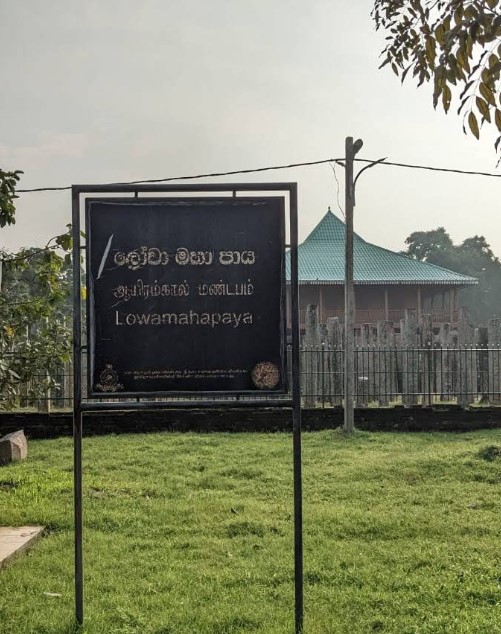
Destruction and Rebuilding
Despite its beauty, Lovamahapaya was successively devastated over the centuries. It was first devastated by natural disasters and invasions, particularly the South Indian Chola invasion of the 10th and 11th centuries. Later kings attempted to rebuild it, though none of them were of the same size and splendor as the original.
One of the most complete reconstructions took place during King Parakramabahu I (12th century), who renovated several religious structures around the island. Due to economic constraints as well as changing political agendas, however, the palace was gradually reduced in size. Nothing remains today except the stone pillars that supported the gargantuan structure. These pillars, arranged in a perfectly symmetrical design, still evoke the glory of the original structure.
Archaeological Significance
Lovamahapaya is among the most excavated archaeological sites in Sri Lanka. Archaeologists have discovered:
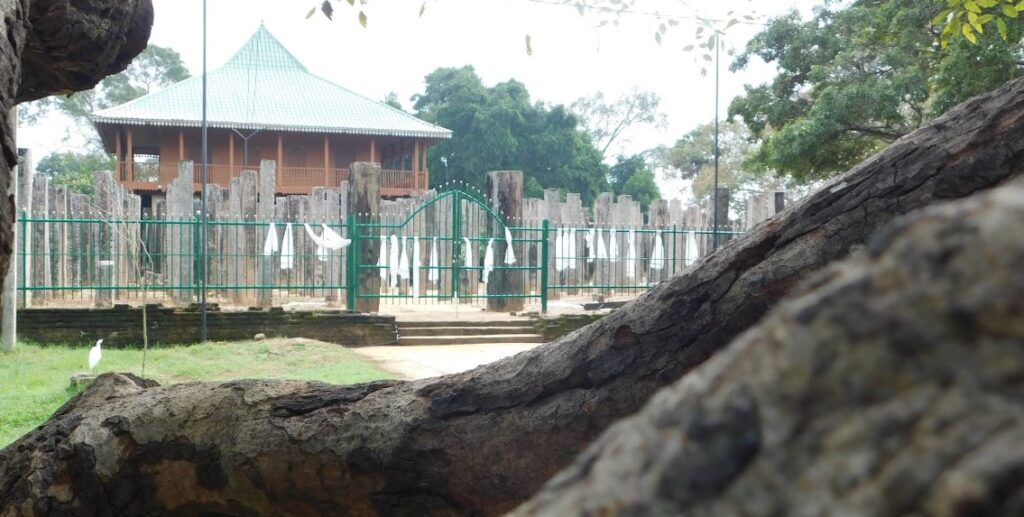
Stone inscriptions, including donor records and religious edicts. Bronze tiles and fragments, confirming historical accounts of the metallic roof of the palace. Drainage systems, which indicate the sophistication of the building’s infrastructure. Foundation stones, which provide information regarding ancient construction techniques.

The symmetrical organization of the columns, along with the enormous size, has made the site invaluable regarding understanding the urban planning and architectural ingenuity of ancient Sri Lanka. Scholars believe the building was modeled after Buddhist architectural designs in India, namely from the Mauryan Empire.
Modern-Day Site and Visitor Experience
Located in the Sacred City of Anuradhapura, a World Heritage Site, Lovamahapaya draws thousands of pilgrims and visitors each year. Visitors walk among the orderly rows of columns, wondering what it must have been like to inhabit such a grand and spiritual setting.
Other points of interest in the vicinity are: Ruwanwelisaya, a large stupa and one of Sri Lanka’s biggest., Sri Maha Bodhi, the fig tree beneath which the Buddha attained enlightenment., Thuparamaya, the first stupa built in Sri Lanka.
In ruins though it is, there is still a strong spiritual aura about Lovamahapaya, especially on Poya days (Buddhist full moon celebrations) when the complex is filled with candles and the sound of chanting pilgrims.
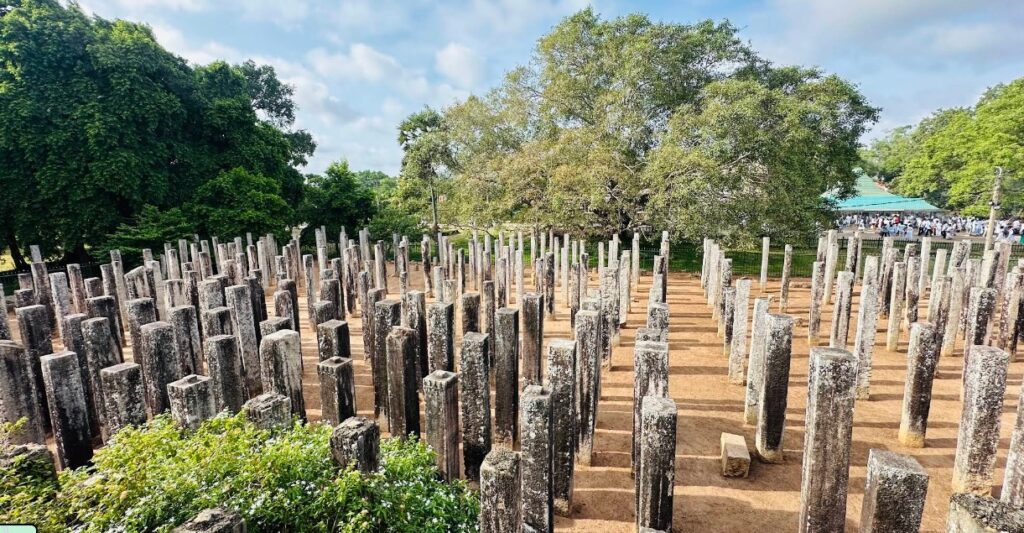
Symbolism and Legacy
Lovamahapaya is not merely an architectural relic but a symbol of religious devotion, royal patronage, and national pride. It is a reflection of the era when Sri Lanka was a global center of Buddhist scholarship and thinking with scholars and pilgrims coming from all across Asia.
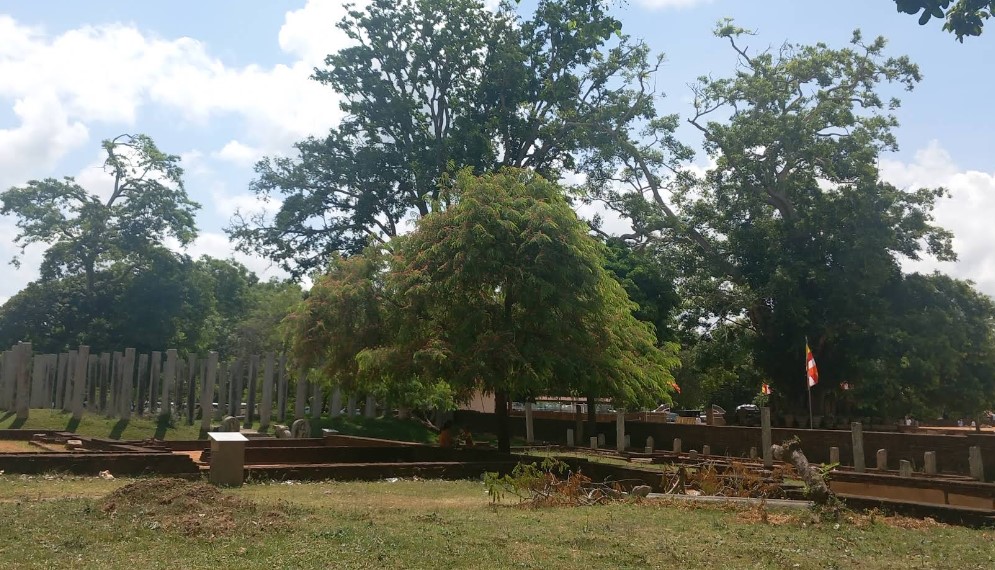
The palace also serves to underscore one of the central Buddhist tenets—impermanence. Even the most ambitious structures, made of the finest materials and loftiest intentions, will deteriorate. The ruins, therefore, are not merely a testament to past glories but a meditative space for the here and now.
Within the context of South Asian history as a whole, Lovamahapaya is a unique example of Buddhist monastic architecture that can be compared to similar complexes in India, i.e., Nalanda University.
How to Reach Lovamahapaya
From Colombo
- By Car: Drive approximately 200 km north via the A9 highway. The journey takes about 4 to 5 hours, depending on traffic conditions.
- By Train: Take a train from Colombo Fort Railway Station to Anuradhapura Railway Station. The journey offers scenic views and takes around 4 to 5 hours.
- By Bus: Several private and government buses operate from Colombo Central Bus Station to Anuradhapura. The journey duration is approximately 5 to 6 hours.
From Anuradhapura City Center
- By Tuk-Tuk: Lovamahapaya is approximately 2 km from the city center. A tuk-tuk ride takes about 5 to 10 minutes.
- By Walking: If you prefer to walk, head southeast from the city center towards Tissawewa. From there, follow the signs to Lovamahapaya. The walk offers a glimpse into the local life and takes around 20 to 30 minutes
Visiting Lovamahapaya
Lovamahapaya was originally a nine-story structure built by King Dutugemunu in the 2nd century BCE. The building was adorned with a copper-tiled roof, earning it the name “Brazen Palace.” Today, visitors can view the remains of the 1,600 stone pillars that once supported the grand edifice.
Opening Hours: Typically open from 8:00 AM to 5:00 PM. It’s advisable to visit early in the morning or late afternoon to avoid crowds and enjoy cooler temperatures.
Entry Fee: There is usually an entrance fee for foreigners to explore the Anuradhapura Sacred City, which includes Lovamahapaya.
